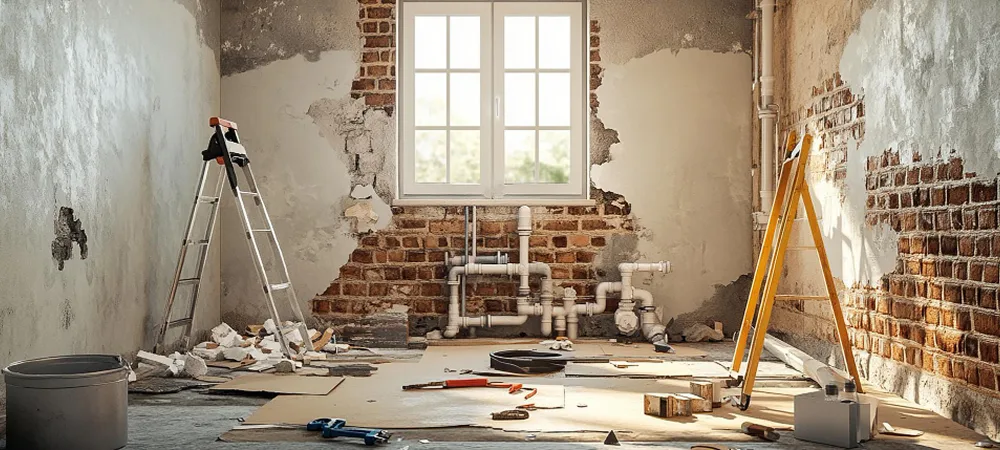When it comes to homeownership, there are few things more exciting (and daunting) than the prospect of rebuilding or renovating your home. Whether you’re considering a knockdown rebuild or a full-scale renovation, understanding the process and taking the right steps is crucial for a successful outcome. Rebuilding your home is a significant investment of both time and money, so it’s essential to approach it with a clear plan in mind.
In this blog, we’ll walk you through the key steps to ensure that your home rebuilding project runs smoothly, stays within budget, and results in a beautiful new living space that suits your needs.
1. Assess Your Current Home’s Condition
Before diving into any rebuilding project, it’s important to assess the condition of your existing home. For a knockdown rebuild, this step is a little simpler, as it involves determining if your home is beyond repair or if rebuilding offers better value than renovation.
However, for a renovation, you’ll need to evaluate the structure, plumbing, electrical systems, and overall condition. Is the foundation stable? Are there any major structural issues? Consulting with a professional inspector or structural engineer can help identify underlying problems and guide you on whether a renovation is worth pursuing or if a knockdown rebuild is the better choice.
2. Set a Clear Budget and Timeline
One of the first things you’ll need to do is establish a budget and timeline for the project. Home renovations or knockdown rebuilds can be expensive, and costs can quickly spiral out of control if you don’t have a solid financial plan in place. Be realistic about your budget and try to include a contingency for unexpected expenses.
Also, consider how long the project will take. For a knockdown rebuild, the process can take anywhere from several months to over a year, depending on the complexity of the project and local regulations. Setting a reasonable timeline can help you avoid frustration and ensure you can plan for any disruptions to your daily life.
3. Hire the Right Professionals
Whether you’re renovating or rebuilding, hiring the right professionals is crucial. This includes architects, builders, designers, and contractors. Look for a home builder with experience in both renovation and knockdown rebuild projects.
For a knockdown rebuild, you may need an architect to help design your new home from scratch. If you’re renovating, a designer may be able to offer creative solutions for transforming your existing space. Always check the qualifications and references of the professionals you’re considering, and ensure they have experience working within your budget and timeline.
4. Obtain Necessary Permits
Before starting your project, it’s essential to check local building regulations and obtain the necessary permits. This process can vary depending on where you live, so make sure you understand what is required for your specific project.
For a knockdown rebuild, you’ll need demolition permits, and for a renovation, you might need permits for structural changes, electrical work, plumbing, or any changes to the building’s footprint. Failing to obtain the necessary permits can lead to costly fines or delays in your project, so make sure you’re in full compliance with local laws.
5. Plan Your Design and Layout
One of the most exciting aspects of a home rebuild is the opportunity to design a space that truly suits your needs. Whether you’re rebuilding from scratch or renovating, planning your design and layout is essential to making the most of your space.
For a knockdown rebuild, you have the chance to design a home that reflects your lifestyle, preferences, and future needs. Consider factors like energy efficiency, sustainability, and the flow of the living spaces. For a renovation, this is the perfect time to reconfigure spaces to make them more functional or aesthetically pleasing. Work closely with your architect or designer to ensure the design matches your vision.
6. Demolition and Construction Process
If you’re embarking on a knockdown rebuild, the demolition process will be one of the first steps. This involves removing the existing structure to make way for the new home. It’s important to work with a licensed demolition company that can handle the job safely and efficiently.
For renovations, the construction process can involve anything from gutting a kitchen to tearing down walls to create an open-plan layout. Whether renovating or rebuilding, communication with your builder is key to ensuring that the work progresses as planned. Regular site visits and updates will help you stay informed of any potential delays or challenges.
7. Manage the Unexpected
Throughout your rebuilding journey, it’s likely that you’ll encounter unexpected challenges. Issues like structural problems, unforeseen damage, or supply chain delays can arise. The key to navigating these challenges is flexibility and good communication with your contractors and professionals.
Having a contingency plan and additional budget can help you manage these surprises without derailing the project. It’s also important to stay patient as delays and changes can sometimes be beyond your control.
8. Final Touches and Inspections
Once the major construction work is complete, it’s time to focus on the finishing touches. This includes interior painting, flooring, fixtures, and finalizing the landscaping if applicable. These elements will truly transform your space and make it feel like home.
Before moving in, you’ll need to arrange a final inspection to ensure that all the work meets local building codes and regulations. Your builder or contractor should help facilitate this process. Once the inspection is complete and your home passes, you’ll be ready to move into your new or renovated home.
9. Enjoy Your New Space
After months (or even years) of planning and construction, the moment you’ve been waiting for has finally arrived—your newly rebuilt or renovated home is ready! Take the time to enjoy the fruits of your labor and settle into your beautiful, custom-designed space. Whether you’ve opted for a complete knockdown rebuild or a thoughtfully renovated space, the end result will be a reflection of your vision and hard work.
Conclusion
Rebuilding your home is a challenging yet rewarding process. By taking the right steps, setting a realistic budget, hiring the right professionals, and being prepared for the unexpected, you can ensure that your project stays on track and results in a home that suits your needs for years to come. Whether you choose to renovate or knockdown and rebuild, the key is to plan carefully, communicate with your team, and enjoy the journey of creating your dream space.





